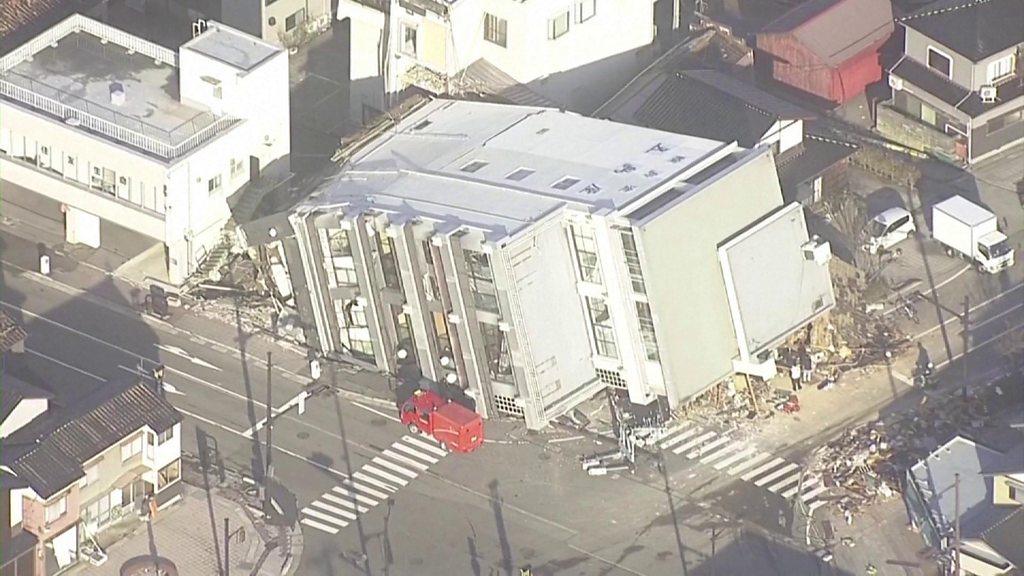Japan earthquake: Eerie search for bodies near epicentre
- Published
Watch: Buildings still smouldering in quake-hit Wajima
The fishing town of Wajima on Japan's west coast is burnt and broken.
At its centre, the remnants of its old marketplace are still smouldering, as if an explosion had just erupted, wiping out an area the size of a football pitch.
A fire broke out when the New Year's Day earthquake hit, and spread instantly, incinerating the wooden stalls and some surrounding homes. Twisted fragments of corrugated iron are scattered among the ash. Firefighters are still combing the smoking debris, checking for unextinguished flames.
Throughout the town, people's traditional wooden homes lie splintered on the ground, collapsed; not made to withstand Japan's endless earthquakes.
It has taken us two days to get this close to the epicentre of the earthquake, the country's most powerful in 12 years. We have lost count of how many times we were forced to turn around because the roads had been so severely severed.
At least it (the dog) didn't find a body. There's still hope.
This has hampered the rescue efforts. The search team with sniffer dogs arrived in Wajima just hours before us.
They spent the afternoon searching the collapsed homes, one at a time, not knowing whether there were people inside each house or not, let alone whether there were survivors. A lack of information is slowing down their ability to find people.
One of the residents, Keiko Kato, ran to greet the rescue workers. Her husband's relatives were trapped inside one of the houses, she believed - his 95-year-old aunt, her niece and her daughter.
She had not heard from them since the quake, and had already searched most of the evacuation centres in vain. But the house was so destroyed, the dog could not go deep enough in, and the team had to move on.
"At least it didn't find a body," she said, adding: "There's still hope." Another resident arrived, pleading with the workers to check his family's house next.
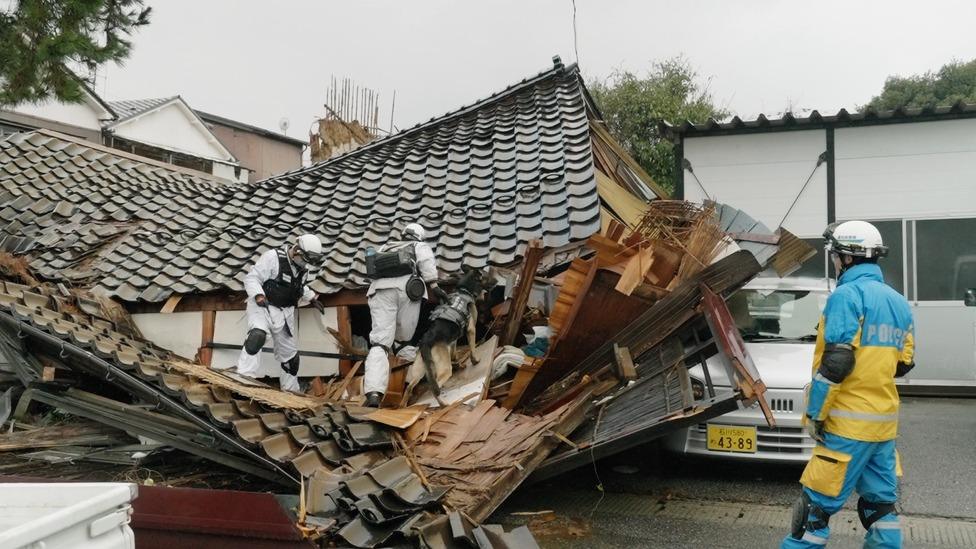
Sniffer dogs are being used to try and locate people who are missing
Wajima now resembles a ghost town. Most heeded the early warnings to evacuate, when tsunamis were forecast, and now their homes are too damaged or unsafe to return to.
Devoid of people, car and house alarms, crushed and activated by the quake, provide some of the only sound here. Though at the end of one street, a surviving vending machine plays eerily upbeat jingles on repeat.
At least 77 people are now known to have died in the quake.
Wajima has the largest death toll so far, with more than three dozen confirmed fatalities, but that number is expected to rise. Some parts of the town are still cut off by ruptured roads and landslides, with help unable to reach people.
Other areas on the remote Noto Peninsula on Japan's west coast, where the quake struck, are also isolated. Further north, the town of Suzu is inaccessible by road, and the scale of the destruction is unclear.
According to the town's mayor, Masuhiro Izumiya, almost none of its houses are standing. Around 90% are completely or almost completely collapsed, he said. A small tsunami struck the city one minute after the quake.
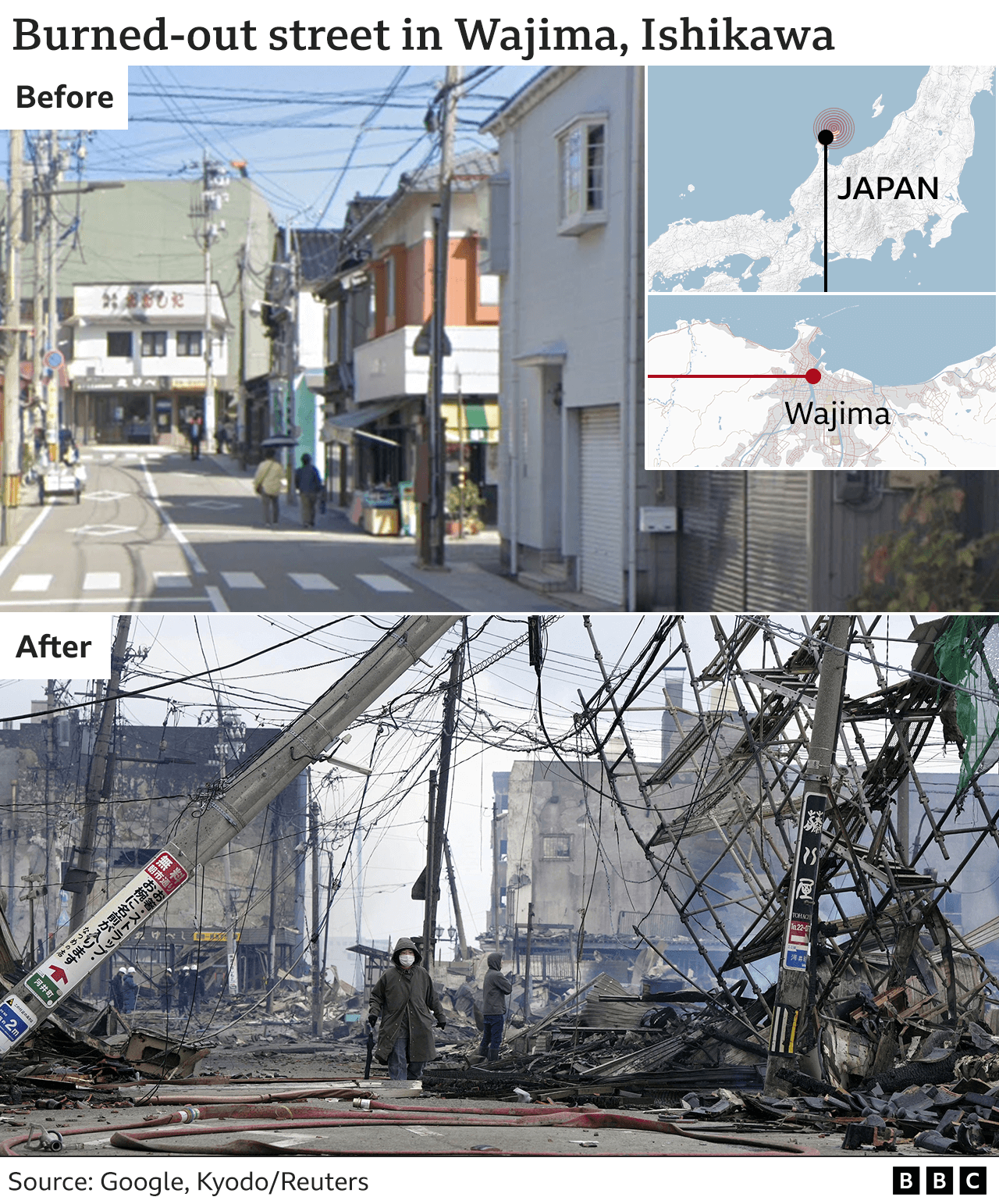
Food and aid are arriving by boat, but local officials told us they were having to go door-to-door to check for survivors.
More than 30,000 people are still in shelters, with some towns lacking water, electricity and internet connection.
One woman, sheltering at the evacuation centre in Wajima with her injured husband, told us that even at the centre there was not enough food and water, and the queues at the only open shop snaked down the road.
On Wednesday, Prime Minister Fumio Kishida announced plans to multiply the number of military and rescue personal providing relief. He has admitted that rescue efforts have been hindered by the extreme damage to the roads.
Japan is one of the most seismically active countries in the world, and activity has been increasing around the Noto Peninsula since the end of 2020. There have been more than 500 small and medium earthquakes here over the past three years. This had bred a false sense of security, among some who live here.
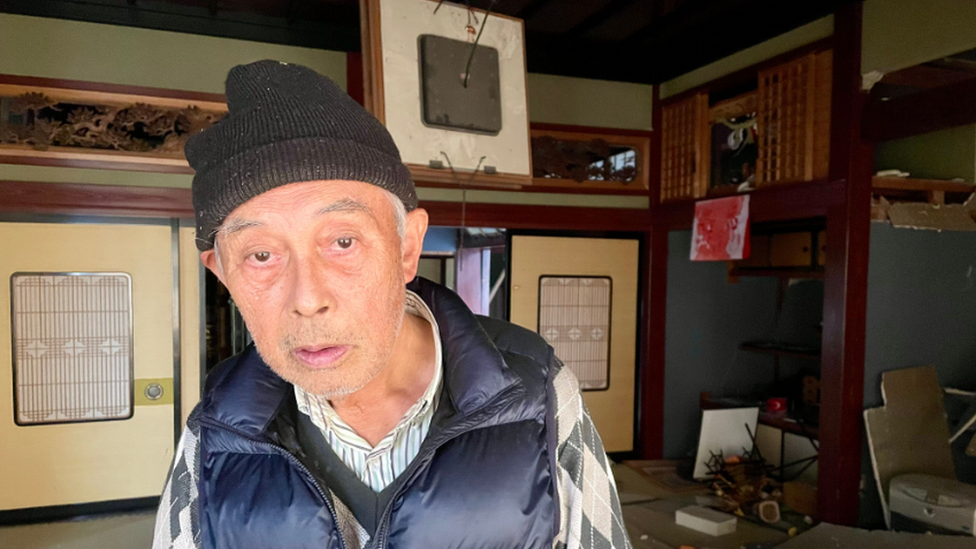
Toshio Iwahama is fearful of aftershocks and how he'll afford repairs
"We always have earthquakes here, but I just didn't think we'd get a big one like this," said Toshio Iwahama, whose home was badly damaged. "I didn't take it seriously. I thought we were safe."
At 82 years old, and recently widowed, he is worried about how he will pay for repairs.
Now it is the aftershocks that concern him. There have been more than 200 tremors since the earthquake struck on Monday.
Warning alarms screech out of mobile phones just before the ground shakes, forcing people in and out of their homes. Some are apprehensive to retreat indoors, to shelter from the cold and rain.
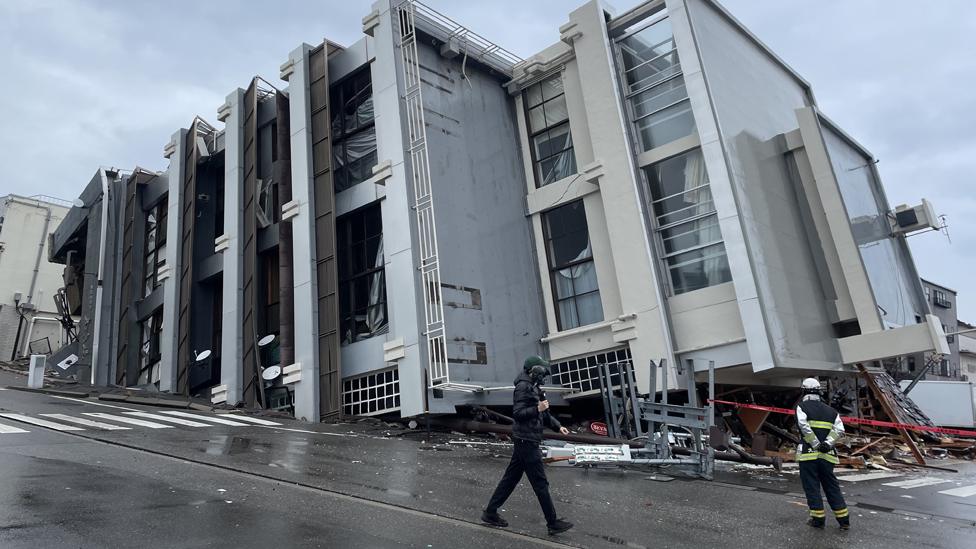
Many traditional wooden houses were destroyed and multi-storey buildings were also brought down in Wajima
But it is the memory of major past earthquakes which has reignited people's trauma, especially of the enormous quake and tsunami of 2011 that triggered the Fukushima nuclear disaster and killed nearly 20,000 people.
Japan has made itself more resilient to earthquakes and tsunamis over the years, and so have its people. Houses, roads and nuclear power plants are safer, while residents are more alert and prepared to respond.
But Monday's earthquake has shown these tremors have the power to surprise and devastate the country.
It has shattered people's hope here on the Noto Peninsula that they would be spared a "big one", leaving some fearful of what could come next.
Toshio Iwahama knows now he is at the mercy of the Earth, and his unfortunately placed home on top of the Pacific Rim of Fire.
- Published3 January 2024
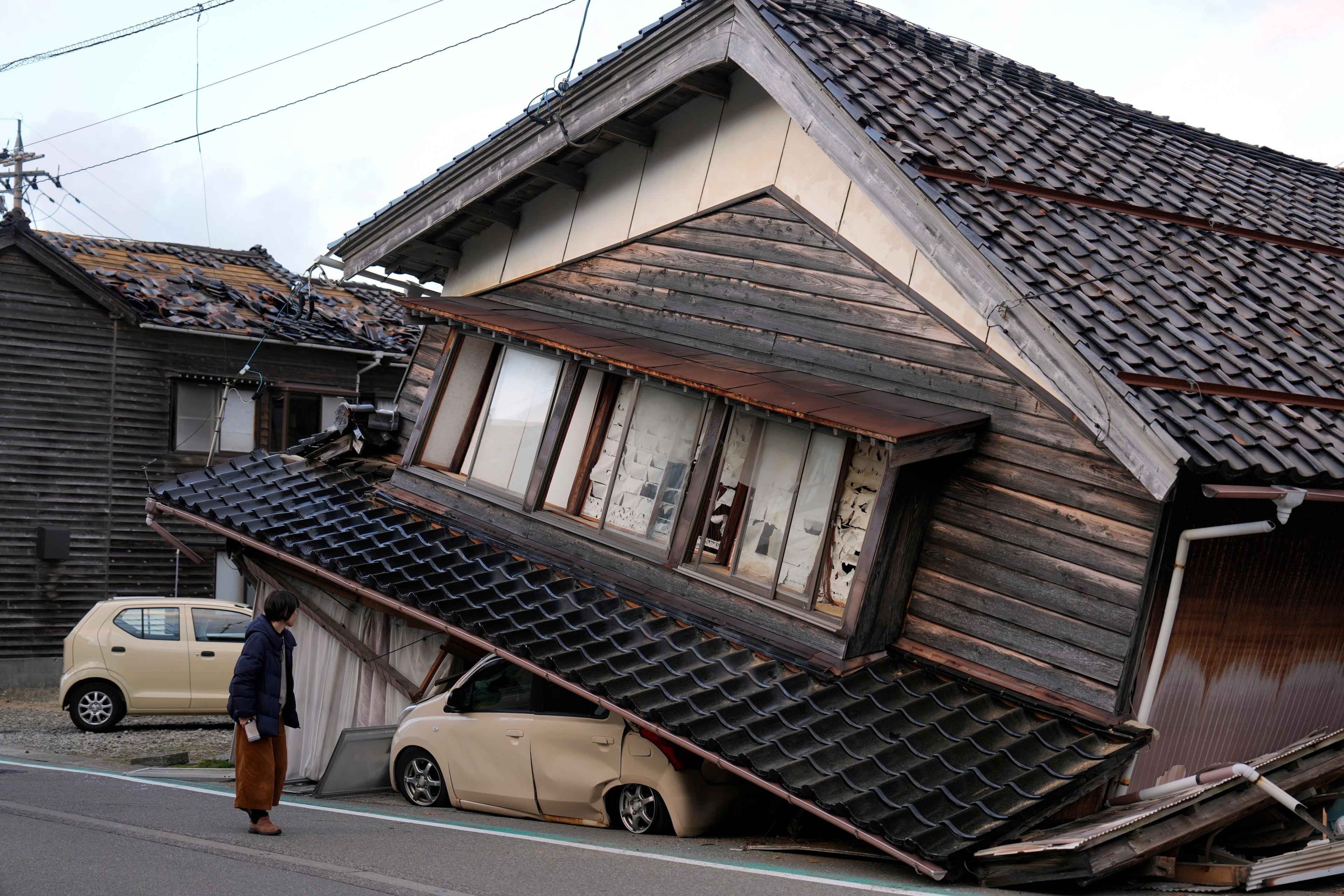
- Published2 January 2024
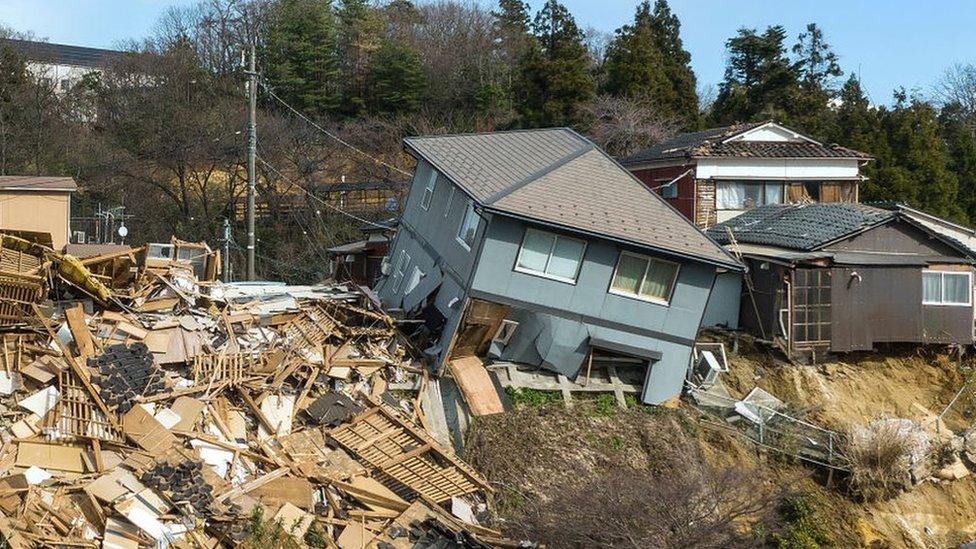
- Published1 January 2024

- Published2 January 2024
